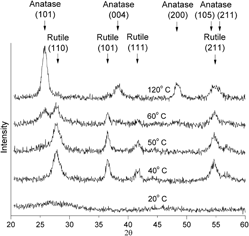Crossref Citations
This article has been cited by the following publications. This list is generated based on data provided by
Crossref.
Nilsson, Erik
Sakamoto, Yasuhiro
and
Palmqvist, Anders E.C.
2011.
Low-Temperature Synthesis and HRTEM Analysis of Ordered Mesoporous Anatase with Tunable Crystallite Size and Pore Shape.
Chemistry of Materials,
Vol. 23,
Issue. 11,
p.
2781.
Fröschl, T.
Hörmann, U.
Kubiak, P.
Kučerová, G.
Pfanzelt, M.
Weiss, C. K.
Behm, R. J.
Hüsing, N.
Kaiser, U.
Landfester, K.
and
Wohlfahrt-Mehrens, M.
2012.
High surface area crystalline titanium dioxide: potential and limits in electrochemical energy storage and catalysis.
Chemical Society Reviews,
Vol. 41,
Issue. 15,
p.
5313.
Elgh, Björn
Yuan, Ning
Cho, Hae Sung
Nilsson, Erik
Terasaki, Osamu
and
Palmqvist, Anders E.C.
2013.
Correlating Photocatalytic Performance with Microstructure of Mesoporous Titania Influenced by Employed Synthesis Conditions.
The Journal of Physical Chemistry C,
Vol. 117,
Issue. 32,
p.
16492.
Biswas, Abhijit
Corani, Alice
Kathiravan, Arunkumar
Infahsaeng, Yingyot
Yartsev, Arkady
Sundstrom, Villy
and
De, Swati
2013.
Control of the size and shape of TiO2 nanoparticles in restricted media.
Nanotechnology,
Vol. 24,
Issue. 19,
p.
195601.
Elgh, Björn
Yuan, Ning
Cho, Hae Sung
Magerl, David
Philipp, Martine
Roth, Stephan V.
Yoon, Kyung Byung
Müller-Buschbaum, Peter
Terasaki, Osamu
and
Palmqvist, Anders E. C.
2014.
Controlling morphology, mesoporosity, crystallinity, and photocatalytic activity of ordered mesoporous TiO2 films prepared at low temperature.
APL Materials,
Vol. 2,
Issue. 11,
p.
113313.
Elgh, Björn
and
Palmqvist, Anders E. C.
2014.
Controlling anatase and rutile polymorph selectivity during low-temperature synthesis of mesoporous TiO2 films.
Journal of Materials Chemistry A,
Vol. 2,
Issue. 9,
p.
3024.
Samsudin, Emy Marlina
Hamid, Sharifah Bee Abd
Juan, Joon Ching
and
Basirun, Wan Jefrey
2015.
Influence of triblock copolymer (pluronic F127) on enhancing the physico-chemical properties and photocatalytic response of mesoporous TiO 2.
Applied Surface Science,
Vol. 355,
Issue. ,
p.
959.
Elgh, Björn
and
Palmqvist, Anders E. C.
2015.
A facile low-temperature synthesis of TiO2 nanoparticles with excellent polymorph control.
Journal of Sol-Gel Science and Technology,
Vol. 76,
Issue. 2,
p.
395.
Müller‐Buschbaum, Peter
Thelakkat, Mukundan
Fässler, Thomas F.
and
Stutzmann, Martin
2017.
Hybrid Photovoltaics – from Fundamentals towards Application.
Advanced Energy Materials,
Vol. 7,
Issue. 16,
Wang, Kun
Xia, Senlin
Cao, Wei
Hohn, Nuri
Grott, Sebastian
Kreuzer, Lucas P.
Schwartzkopf, Matthias
Roth, Stephan V.
and
Müller-Buschbaum, Peter
2018.
Comparison of UV Irradiation and Sintering on Mesoporous Spongelike ZnO Films Prepared from PS-b-P4VP Templated Sol–Gel Synthesis.
ACS Applied Nano Materials,
Vol. 1,
Issue. 12,
p.
7139.
Símonarson, Gunnar
Sommer, Sanna
Lotsari, Antiope
Elgh, Björn
Iversen, Bo B.
and
Palmqvist, Anders E.C.
2019.
Evolution of the Polymorph Selectivity of Titania Formation under Acidic and Low-Temperature Conditions.
ACS Omega,
Vol. 4,
Issue. 3,
p.
5750.
García-López, Elisa I.
Liotta, Leonarda F.
and
Marcì, Giuseppe
2021.
Materials Science in Photocatalysis.
p.
13.
Conti Nibali, Valeria
D’Angelo, Giovanna
Arena, Antonella
Ciofi, Carmine
Scandurra, Graziella
and
Branca, Caterina
2022.
TiO2 Nanoparticles Dispersion in Block-Copolymer Aqueous Solutions: Nanoarchitectonics for Self-Assembly and Aggregation.
Journal of Functional Biomaterials,
Vol. 13,
Issue. 2,
p.
39.
Napruszewska, Bogna D.
Walczyk, Anna
Duraczyńska, Dorota
Kryściak-Czerwenka, Joanna
Karcz, Robert
Gaweł, Adam
Nowak, Paweł
and
Serwicka, Ewa M.
2024.
TiO2 Nanoparticles with Adjustable Phase Composition Prepared by an Inverse Microemulsion Method: Physicochemical Characterization and Photocatalytic Properties.
Nanomaterials,
Vol. 14,
Issue. 13,
p.
1130.





